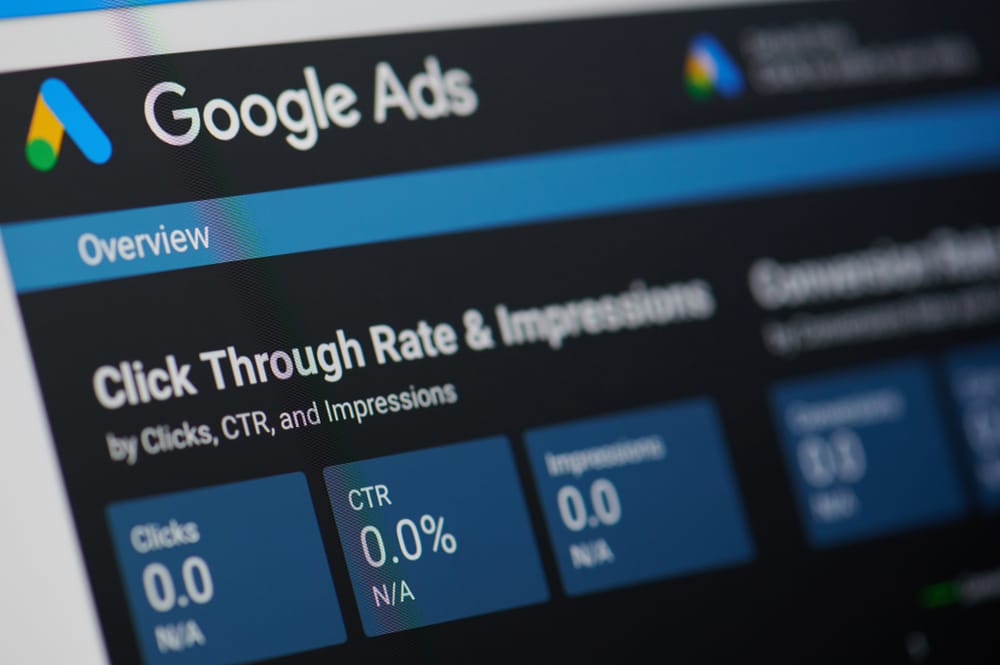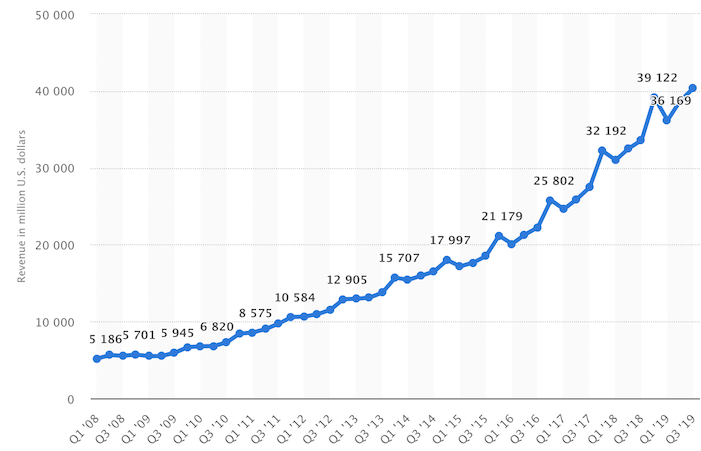
The Google Ads metric for gauging an ad’s average position was eliminated in September 2019. Average Position was often used to gauge where you ranked for a specific keyword against competitors in the auction. For example, with an average position of 3.1 for a well-performing keyword, it’s simple to judge that there exists an opportunity to increase traffic by improving the keyword’s Ad Rank.
Why Remove Average Position?
Here’s what Google stated about the change: “Average position (Avg. Pos.) will be removed in September 2019. The percentages of top and absolute top impressions provide a clearer view of where your ads appear on search pages. You can use these new metrics to optimize your ad position.”
Google has continued to shift away from the old school manual cost per click bidding to automated bidding strategies. With Google’s machine learning capability, paired with the knowledge of user behavior, Google claims to be able to be more efficient than humans running manual bids. That makes sense.
Additionally, the machine learning focuses on an individual’s propensity to buy rather than humans manually optimizing based on keywords.
Automated campaigns like Target CPA and Target ROAS negate the validity of average position and even cost-per-click. These machine learning models are built to hit a self-determined target. For example, set a $50 cost per conversion for a certain campaign or ad group if that is profitable for you and Google will attempt to maximize the amount of conversions within that threshold. Average position is irrelevant in this scenario and in the new world of automation.
How to Measure Opportunity Now
This shift to automation creates the need to re-think how the data is analyzed, including the metrics necessary to properly evaluate the data. While Average Position has been a great secondary metric for evaluating opportunity and performance, Google has decided to replace it with the following new metrics.
- Search Absolute Top Impression Share – “Search absolute top impression share” is the percentage of your Search ad impressions that are shown in the most prominent Search position. Absolute top impression share = absolute top impressions / total eligible top impressions
- Search Top Impression Share – Search top impression share (IS) is the impressions you’ve received in the top location on the search result page divided by the estimated number of impressions you were eligible to receive in the top location. Use this metric to bid on the top page location. The top location is anywhere ads appear above the organic search results. Eligibility is based on your current ads’ targeting settings, approval statuses, bids, and quality.
- Search Exact Match Impression Share – “Search exact match impression share (IS)” is the exact match impressions you’ve received divided by the estimated number of exact match impressions you were eligible to receive on the Search Network. Exact match impressions are those that matched your keywords exactly, or were close variants of your keyword.
- Search Lost Absolute Top Impression Share (rank) – Search lost absolute top impression share (rank) estimates how often your ad was not the very first ad above the organic search results due to poor Ad Rank. Ad Rank determines your ad position relative to other ads and whether your ad is able to show at all. It is calculated using your bid, ad and website quality, context of the search, Ad Rank thresholds, and the expected impact of extensions and other ad formats.
- Search Lost Top Impression Share (rank) – Search lost top impression share (rank) estimates how often your ad didn’t show anywhere above the organic search results due to poor Ad Rank. Ad rank determines your ad position relative to other ads and whether your ad is able to show at all. It’s calculated using your bid, ad and website quality, context of the search, Ad Rank thresholds, and the expected impact of extensions and other ad formats.
- Search Lost Impression Share (rank) – “Search lost impression share (rank)” estimates how often your ad didn’t show on the Search Network due to poor Ad Rank. Ad Rank determines your ad position and whether your ad is able to show at all. It’s calculated using your bid, ad and website quality, context of the search, Ad Rank Thresholds, and the expected impact of extensions and other ad formats. Impression share data is updated daily.
Got all that?
Let’s go through an example.

Taking a look at this data, the top keyword (which is purposefully not shown), in row two, has 847 clicks but less than 10 % of the absolute top impression share. Along with a top impression share of ~71%, this signifies that there is definitely substantial room to increase traffic. With a high cost per conversion though, you may not want to increase Ad Rank on that keyword.
For the second keyword, in row three, it has 690 clicks and almost a 96% absolute top impression share. While the cost per conversion is great at ~$30, there isn’t much room to increase traffic.
So Why the Skepticism of Automation?
Digital advertising is necessary in most eCommerce strategies. Commercial queries can drive valuable traffic to your business, but the efficiency of ad spend is still a major player when it comes to profitability.
Among the rules that Google has changed recently is loosening the definition of match types so that “Exact Match” doesn’t actually mean “exact” anymore. Google allows close variations of keywords to show and there’s no true “exact” keywords you’re able to target. This allows Google to increase ad revenue.
When creating a new campaign, merchants find it difficult not to select a non-automated bidding strategy and are forced to click a “not recommended” link to get to a manual strategy. They also have an army of account reps helping to steer account owners to automation.
Google forces Shopping Links to open in new tabs to encourage multiple clicks on each search results page. This allows Google to increase ad revenue.
It’s well-documented that a large percentage of Google’s revenue is derived from advertising dollars, and they’re also not doing poorly in that area according to a Statista report.

The changes that have been made, along with experience with automation will certainly give merchants pause, wondering if Google has their best interest at heart.
Simply put, do you feel comfortable handing the wheel over to Google?
Automation Isn’t as Easy as it Sounds
Automated bidding strategies are not that simple. Selecting the correct bidding strategy takes some planning and it’s imperative to also have an understanding the weaknesses of the strategy. Will the automation react fast enough to capture sale periods – especially those like Black Friday or Cyber Monday?
Automated bidding strategies do alleviate some of the manual work when setup properly, however, the machine learning technology is only as good as the data it’s fed.
Let Us Help
We offer free Digital Advertising audits!
We’re passionate about digital advertising and would love the opportunity to help your team dominate Q4! Our years of experience in Google/Bing, search ads, shopping ads, and display will provide a competitive advantage.
